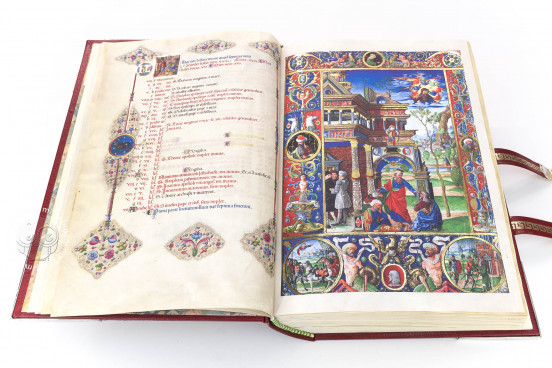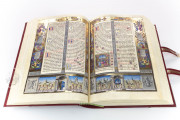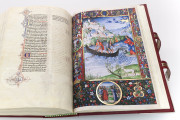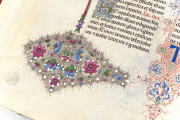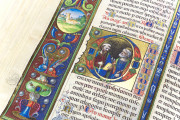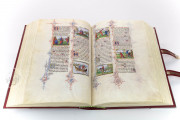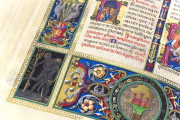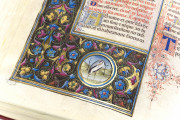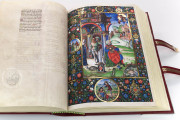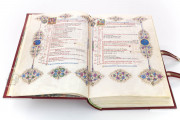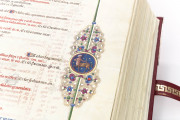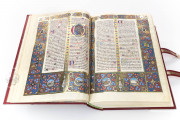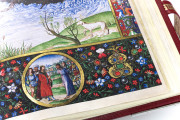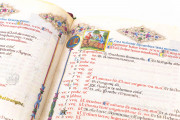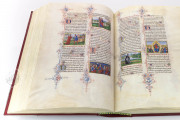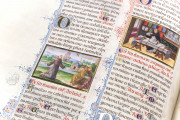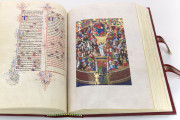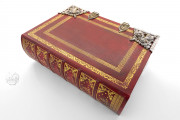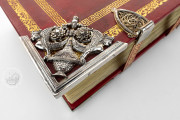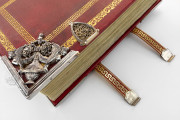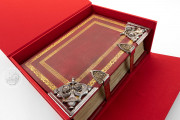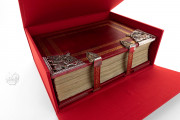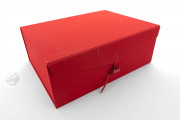The Breviary of Ercole d'Este is one of the most beautiful Renaissance manuscripts from Northern Italy, Ferrara. The codex, also known as Breviario di Ercole I d'Este, was written and illuminated in the early sixteenth century and features forty-five superbly illuminated full-page miniatures, eleven skillfully painted half-page illustrations, and forty elegantly depicted scenes in small frames. There are also countless initials, inhabited, historiated, and decorated with figures from the text.
The Artistry of the House of Este
Written in Latin, the manuscript was illuminated between 1502 and 1504 by numerous artists who exalt the figure and the power of the duke, surpassing, at times, the artistic apex reached in the Bible of Borso d’Este, Ercole's brother, written at least fifty years before.
Some of the artists who worked for the House of Este and who specifically contributed to the decoration of the Breviary of Ercole d'Este are Matteo da Milano, Tommaso da Modena, and Cesare dalle Vieze, with his brother Andrea.
Breviary of Ercole d’Este and Its Technical Novelties
The Breviary of Ercole d'Este is certainly an impressive work due to the amount of illumination and the iconographic apparatus it bears. The type of decorations with threadlike twines, often extending as frames to the text, appear as a novelty never featured in the artistic tradition of illuminators from Ferrara.
These new decorations act as frames to a variety of subjects, depicted with a skilled chiaroscuro technique. An example of this is the image of the skull or death with the scythe – originated from the transalpine area and developed in Italy in the fifteenth century – which symbolizes the memento mori theme, recurring in the work of Matteo da Milano (i.e. Book of Hours of Eleanor Gonzaga, fol. 176r).
Another decorative device, typical of the Este house, is flowers, which are developed in a variety of schemes, often featuring the colors red, blue, and green (fol. 189v).
A Powerful Commissioner
It seems certain that the commissioner of the manuscript was Ercole d'Este, Duke of Ferrara, whose death occurs in January 1505, shortly after the breviary was finished.
Superb Example of Gothic Textura
The Braviary of Ercole d’Este exhibits an elegant example of Gothic textura. The script also features its typical use of abbreviations, bitings, ligatures, and two-shaped r and s.
Binding description
Binding
As many medieval manuscripts, unfortunately the Breviary of Ercole d'Este lost its original binding. The current one has been dated back to the second half of the eighteenth century and features red Morocco leather with decorations in golden silver, silver Renaissance corners, and Gothic clasps in golden silver.
We have 1 facsimile edition of the manuscript "Breviary of Ercole d'Este": Breviario di Ercole I d'Este facsimile edition, published by Imago, 2011
Request Info / Price

